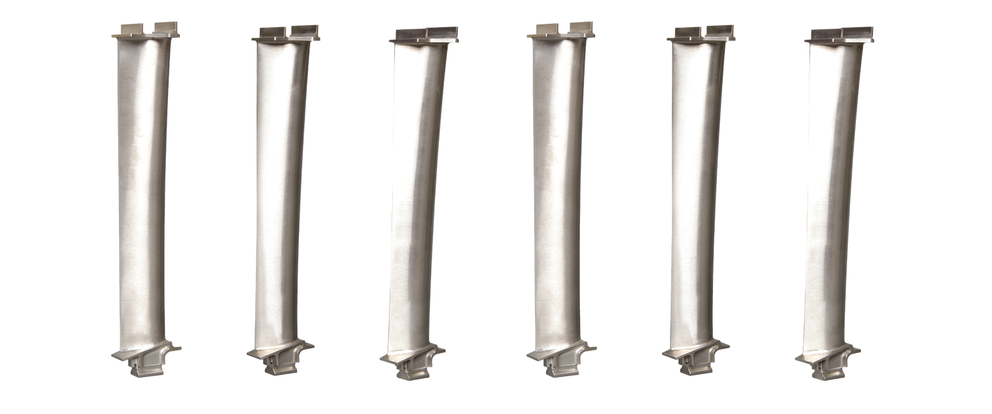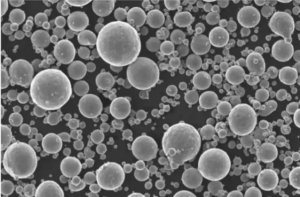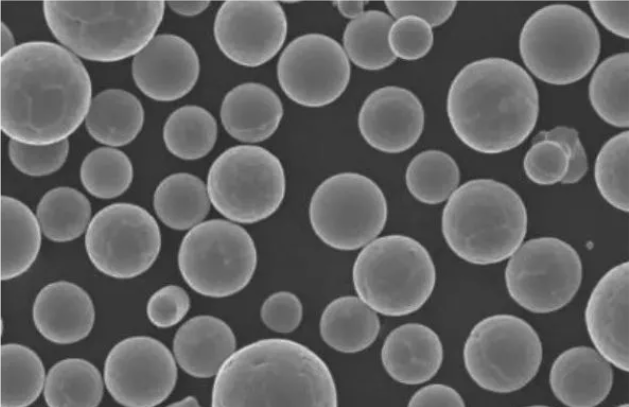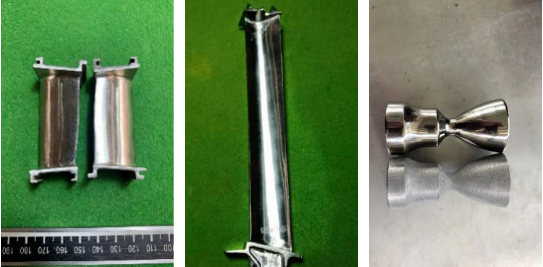Titanium aluminum alloy Ti48Al2Cr2Nb has the characteristics of high-temperature resistance, oxidation resistance, and low density, and its elastic modulus and creep resistance are comparable to nickel-based high-temperature alloys, and its density is less than half of that of nickel-based alloys, and its use temperature is expected to reach more than 900°C. It is an ideal material to replace traditional superalloys at 600-900°C to achieve weight reduction and is considered to be one of the most promising high-temperature structural materials with broad application prospects in the aerospace and automotive industries.
Background on the Application of Ti48Al2Cr2Nb Alloy
As early as 2005, North Carolina State University in the United States publicly reported the organization structure of electron beam selective melting of titanium-aluminum alloy, followed by Texas State University in the United States, Arcam in Sweden, and Avio in Italy also carried out research on electron beam selective melting of titanium-aluminum alloy. The Italian company Avio is at the world-leading level in the engineering application research of electron beam selective melting and forming of complex titanium-aluminum components, and the company has successfully developed a variety of electron beam selective melting and forming technologies for complex titanium-aluminum components.
It is reported that the Italian Avio company electron beam selective melting titanium aluminum alloy blade has entered the mass production stage, with the target annual output of 60,000 blades. 2012, the United States General Electric Company spent 4.3 billion U.S. dollars to acquire the Italian Avio company’s aviation business, mainly targeting electron beam 3D printing titanium aluminum blade; in 2016 spent 760 million U.S. dollars to wholly develop the electron beam 3D printing technology and In 2016, the company spent US$760 million on the acquisition of Arcam, a leading international company in Sweden, including its primary manufacturer of global 3D printing powder materials: AP&C Canada, which controls the core technology of the whole chain of SEBM printing materials, process equipment, and engineering applications.

Engine Blades in Titanium and Aluminium
Sailong Ti48Al2Cr2Nb Development History and Planning
In the melting of the raw material bar, considering that the Al element in the powder is easy to be burnt, the content of the stable strengthening element Nb is not easy to be accurately controlled and the impurity element is not easy to be accurately controlled during the process of electron beam 3D printing forming, the team, after continuous composition design optimization, multiple remelting and repeated testing, has ensured the accurate control of the main element composition and low impurity content of the raw material bar, and also successfully achieved the production of the alloy bar from the melting ingot to the alloy bar. The production of large quantities of alloy rods from molten ingots to bars is also successfully achieved.
In the powder making process, the team has adopted two main technological routes: the vacuum electrode induction atomisation (EIGA) technology and the plasma rotating electrode (PREP) technology.

Ti-48Al-2Cr-2Nb produced by EIGA

Ti-48Al-2Cr-2Nb produced by PREP
Ti48Al2Cr2Nb Powder Basic Physical Properties
In terms of powder oxygen content control, the oxygen content of Ti48Al2Cr2Nb powder prepared by EIGA technology has to be further reduced, and currently, the oxygen content of some batches can be controlled to below 650ppm, while the oxygen content of Ti48Al2Cr2Nb powder prepared by PREP technology can be steadily controlled to around 600ppm. In addition, the hollow powder rate of the powders prepared by the two techniques was studied by using a synchrotron radiation light source. At present, the hollow powder rate of Ti48Al2Cr2Nb powder prepared by the EIGA technique is about 3-4 times that of Ti48Al2Cr2Nb powder prepared by the PREP technique.
3D printed parts of Ti-48Al-2Cr-2Nb
On 28 September 2020, GE Aviation announced that the GE9X engine has been certified by the Federal Aviation Administration (FAA), a key milestone for the GE9X engine powering the 777X family of aircraft. The engine currently features more than 300 additively manufactured parts, of which the titanium and aluminum low-pressure turbine blades are among them.

EBM prints by PREP Ti-48Al-2Cr-2Nb powder
Welcome friends interested in the titanium-aluminum alloy series (Ti48Al2Cr2Nb, Ti22Al25Nb, Ti45Al8Nb) to come and communicate (spherical titanium-aluminum powder, e-beam 3D printing process research, prototype installation assessment, and verification, plasma rotary electrode powder making and e-beam 3D printing equipment ……)

12 Comments
.
.
.
i przeczytaj nasz artykuł!
.
.
.
.
. Zainspiruj się już dziś!
.
Muchas gracias. ?Como puedo iniciar sesion?
https://prep-system.com/slpa-n/